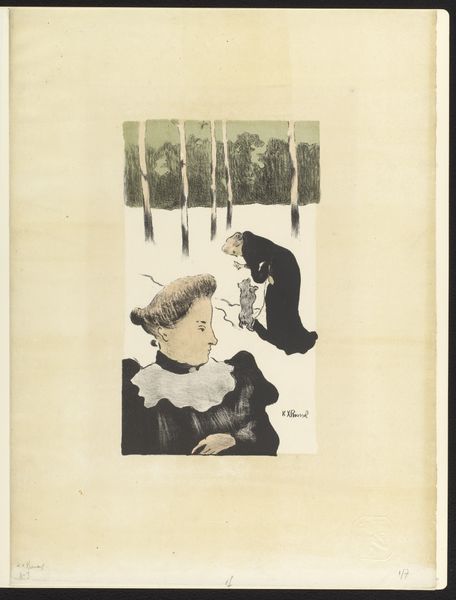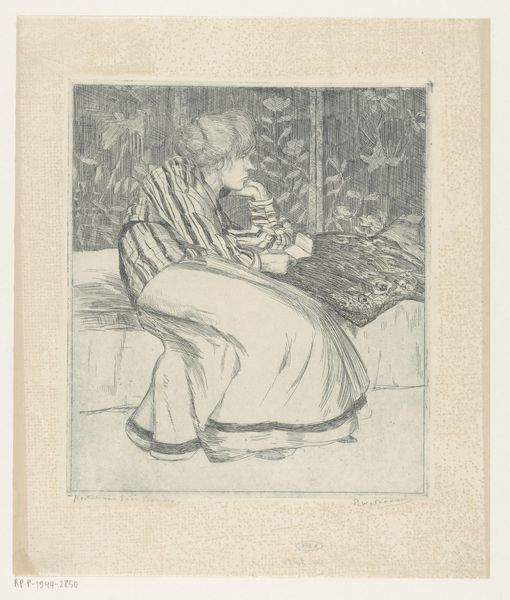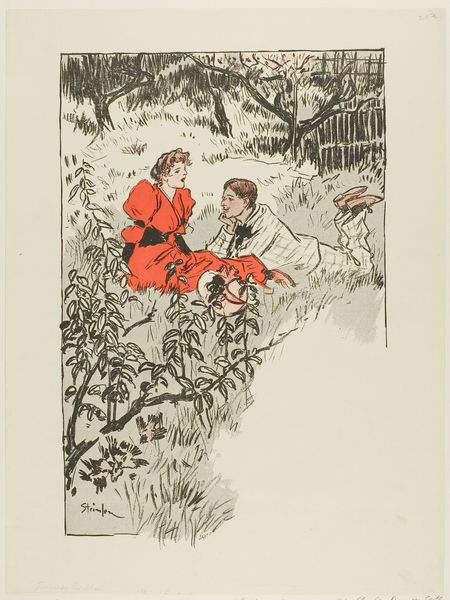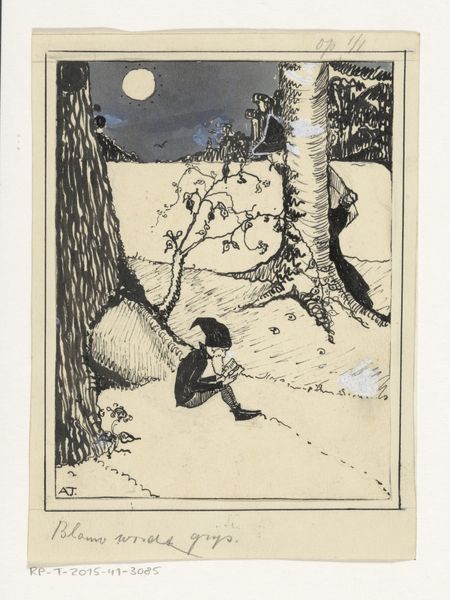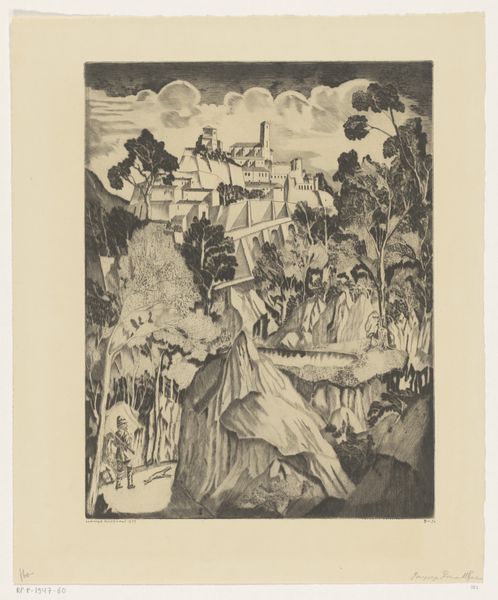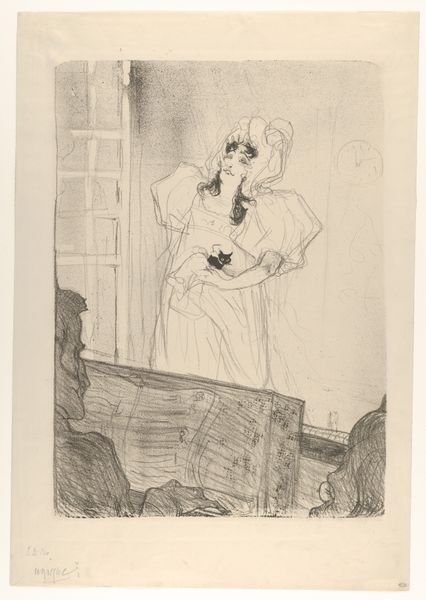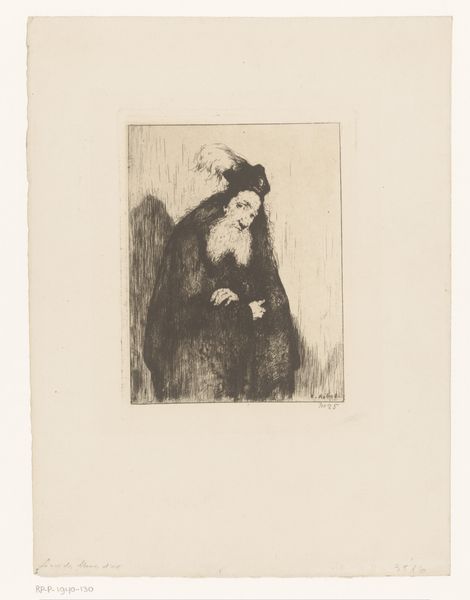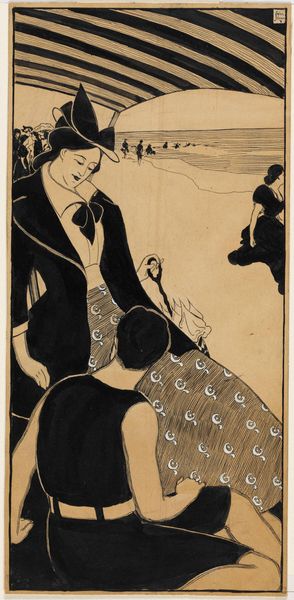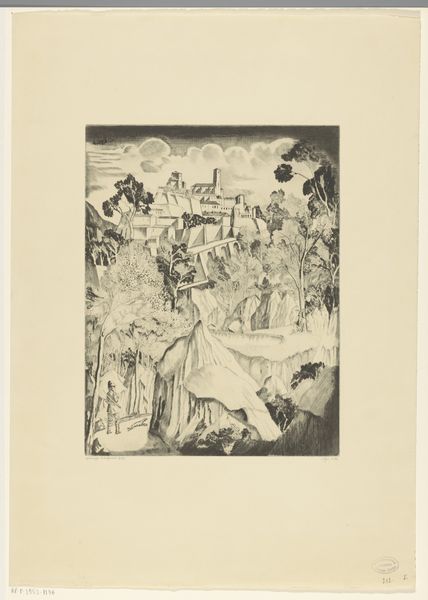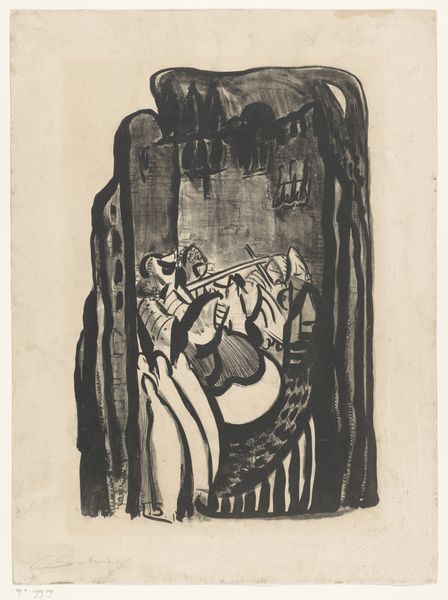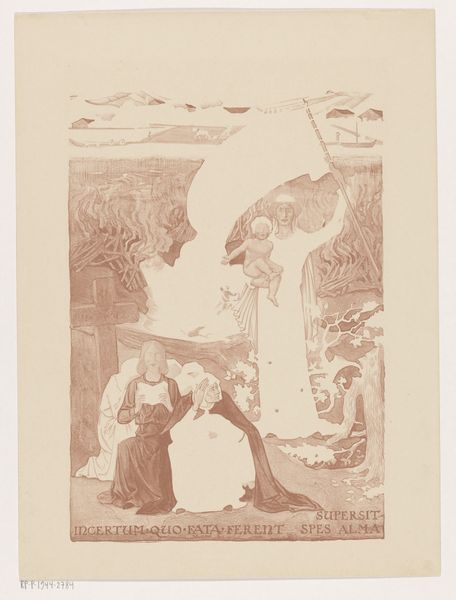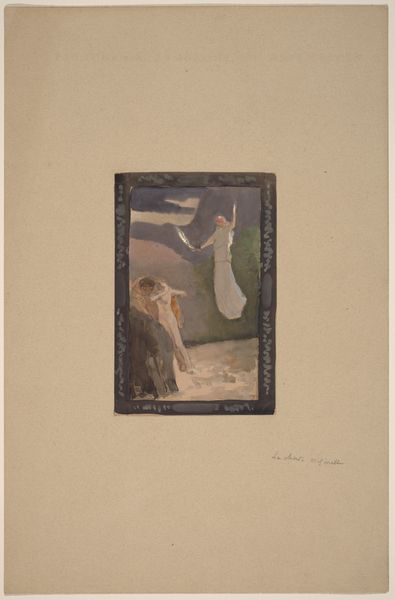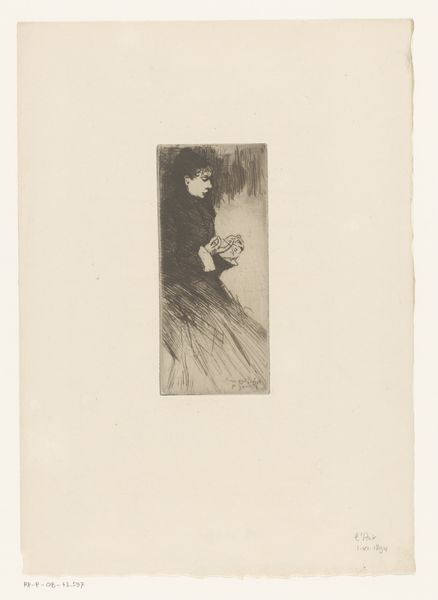
Dimensions: 13 x 7 1/2 in. (33.02 x 19.05 cm) (image)
Copyright: Public Domain
Editor: This is Ker Xavier Roussel’s "In the Snow," a color lithograph from 1893, currently residing at the Minneapolis Institute of Art. It has this interesting, almost dreamlike quality. The figures and the stark trees in the background, create an intriguing narrative, but it's difficult to decipher. How do you interpret this work? Curator: Indeed, a dreamlike quality permeates Roussel’s lithograph. Consider the placement of figures. The woman in the foreground is physically present, but her gaze is directed elsewhere, lost in thought. The other woman, hunched over in the background with the dog, appears more ethereal. What emotional weight do you ascribe to this positioning, the physical versus the psychological? Editor: That’s a great question! It feels like a contrast between reality and inner life. The woman in the front represents presence, and the scene behind might represent her thoughts or memories? Curator: Precisely! And note the deliberate simplicity of the landscape. The stark, bare trees can be viewed as symbols of vulnerability, loss, or the passage of time during the winter season. Given its fin-de-siècle creation, what other concepts might have inspired its symbolic approach? Editor: Considering the Symbolist movement was prevalent at the time, the figures could represent ideas, and the landscape perhaps some internal emotional state? Curator: An excellent point. Roussel was close to the Symbolist circle. And don’t forget, prints like these also played an important role in bringing avant-garde imagery into people's homes during this period. Editor: I didn’t realize that! So, it’s not just a personal reflection, but a piece of cultural dissemination? Curator: Precisely. The image can be experienced personally while also taking part in the shared symbolism of a period. What initially seemed simple now reveals layers of social and emotional significance. Editor: I’ll definitely think about artwork differently from now on. Thanks for shedding light on the imagery!
Comments
minneapolisinstituteofart about 2 years ago
⋮
The small rituals of daily life were favorite subjects of the Nabis, a group of avant-garde artists active in the 1890s. Ker-Xavier Roussel rendered this dog-training scene in pure, flat shapes, with no indication of middle ground. He focused on the play of silhouettes-and the humorous fact that the prim foreground figure is someone the little dog will never please. This impression is most fascinating, however, for the drastic misprinting of the green ink. The shift to the right, resulting in blank trees and a green shadow along the main figure's profile, suggests that the paper was misaligned by the printer or accidentally moved while in the press. More likely, this was a trial proof that was never intended to leave printer Edouard Ancourt's workshop. It may have been used to check colors or the integrity of the lithographic stone before the final print was approved.
Join the conversation
Join millions of artists and users on Artera today and experience the ultimate creative platform.
